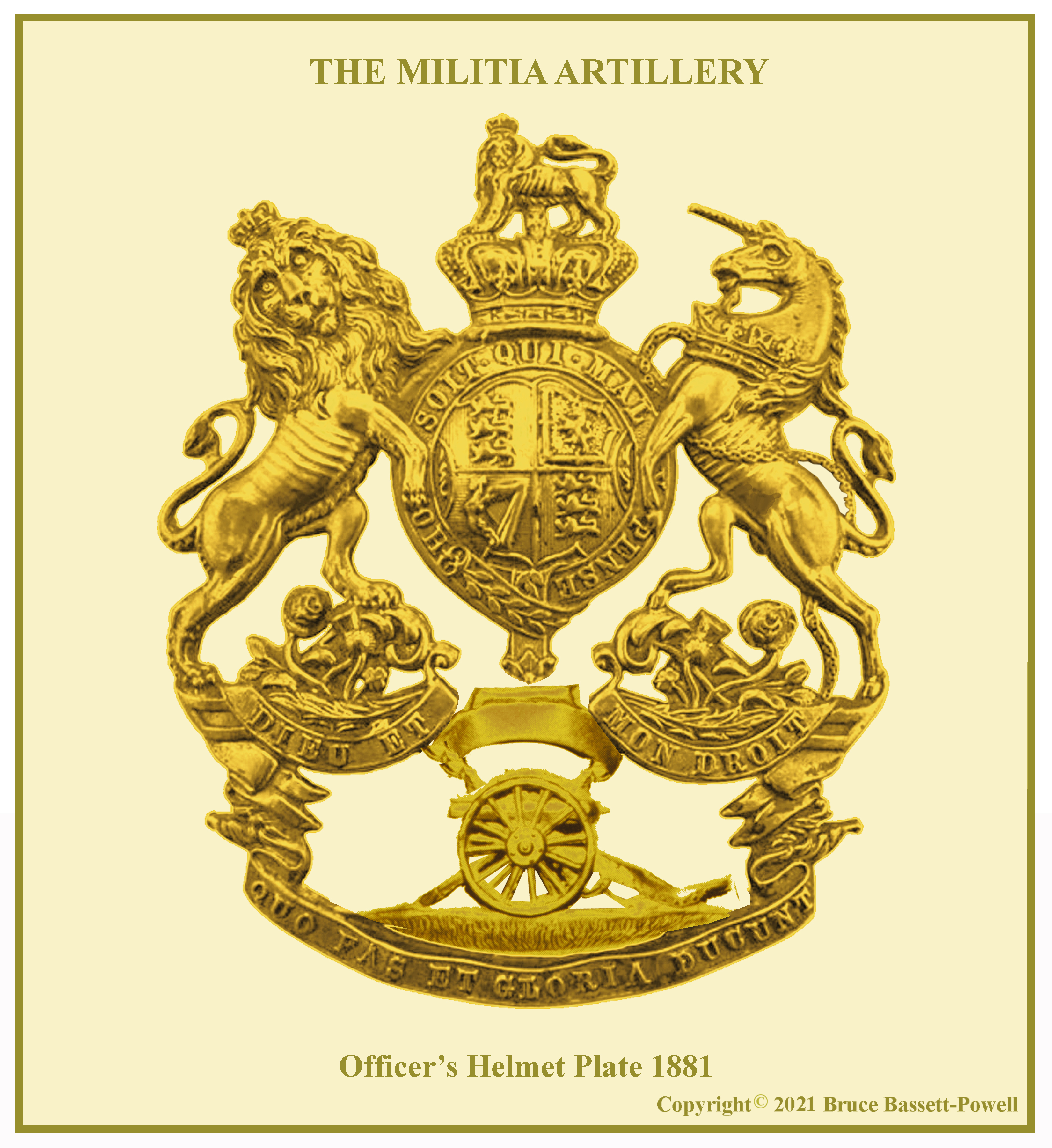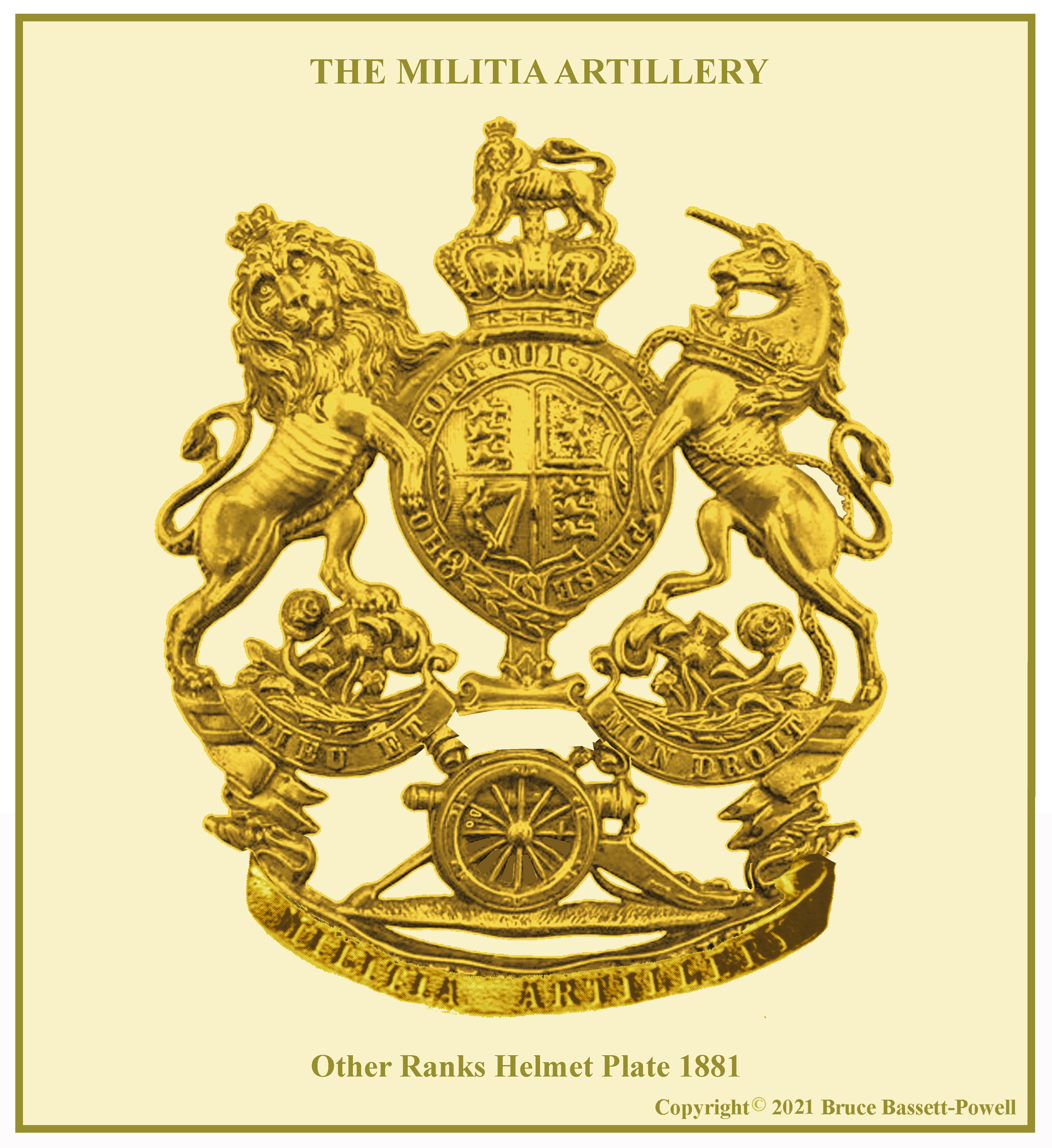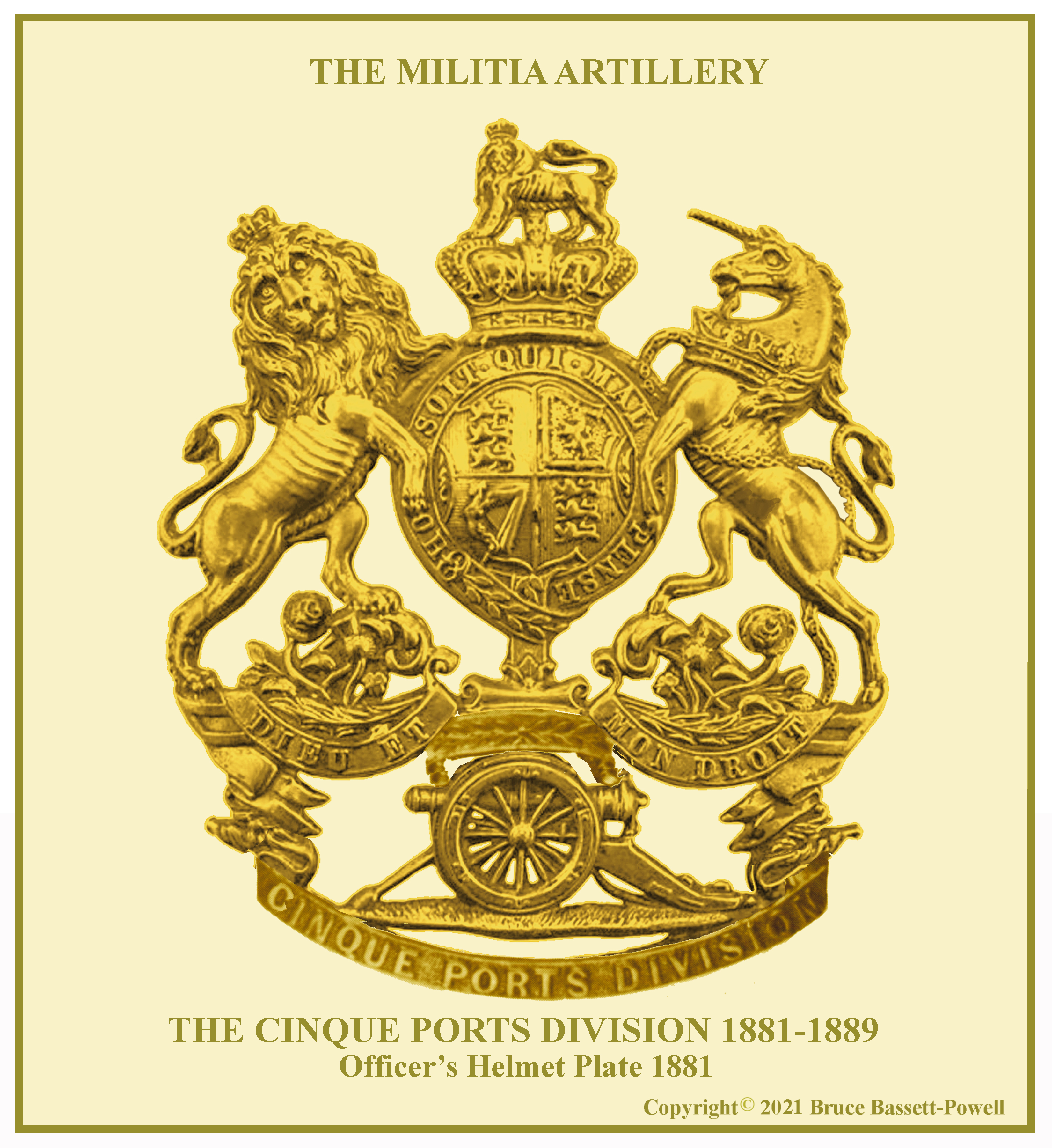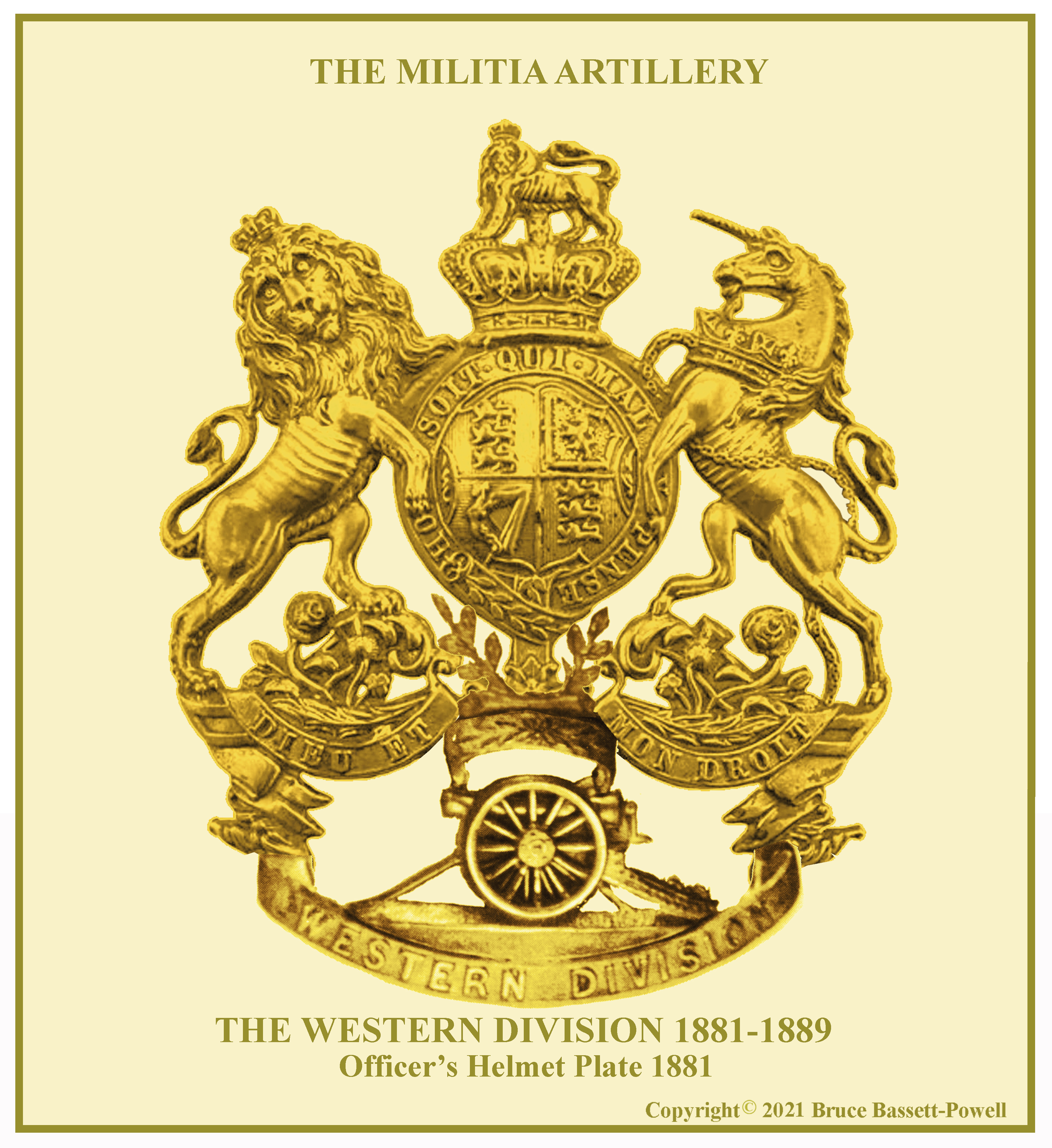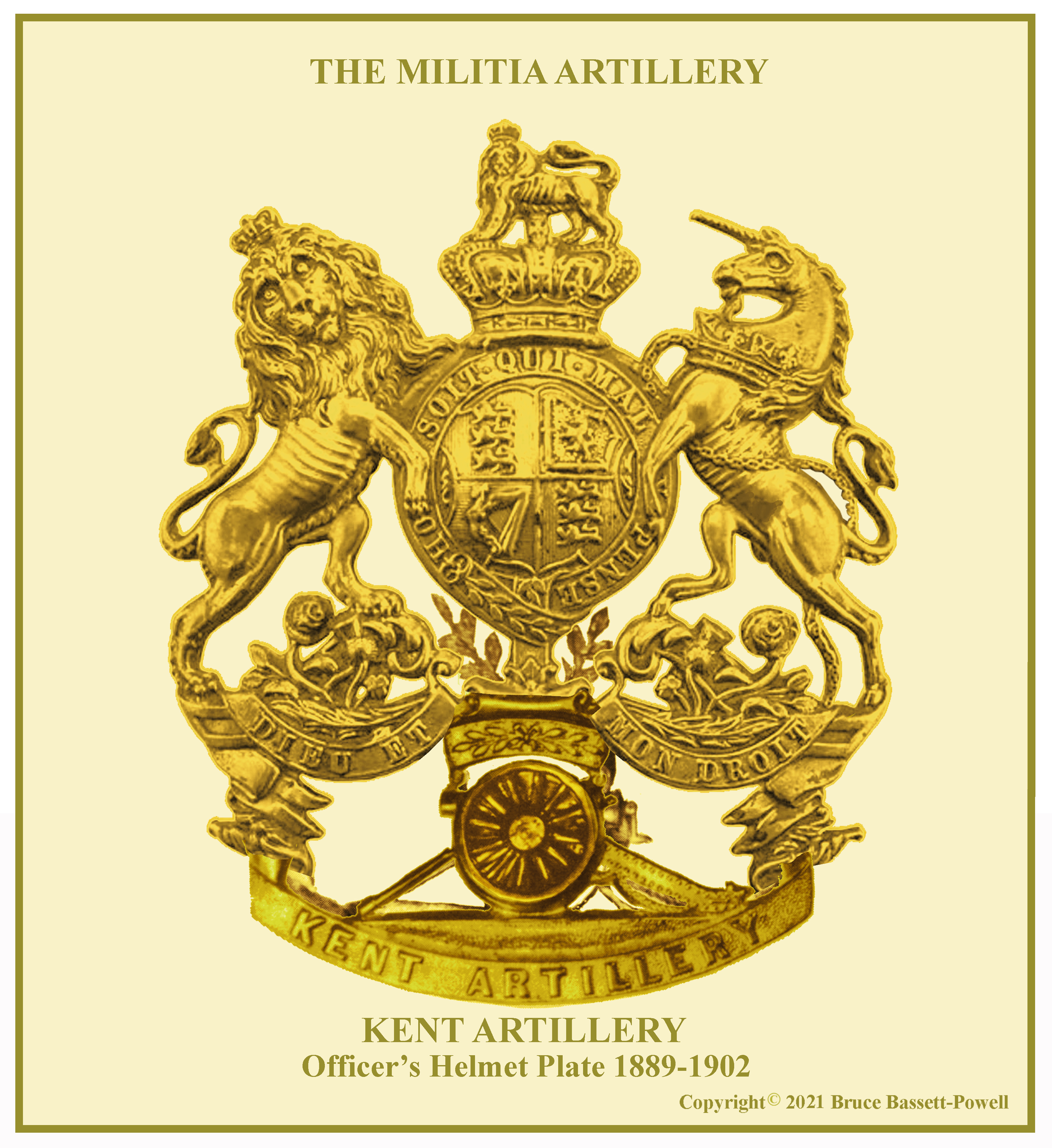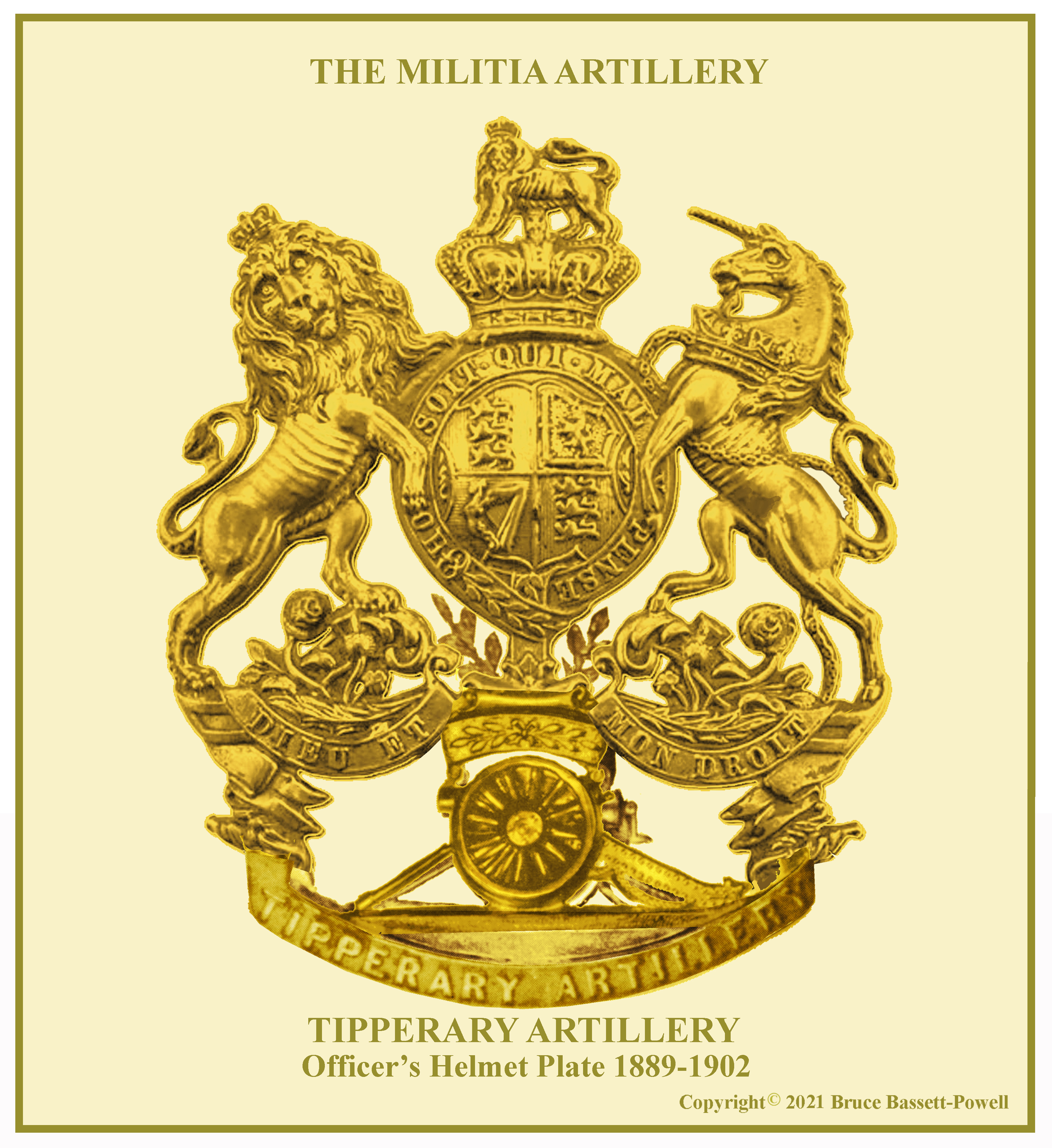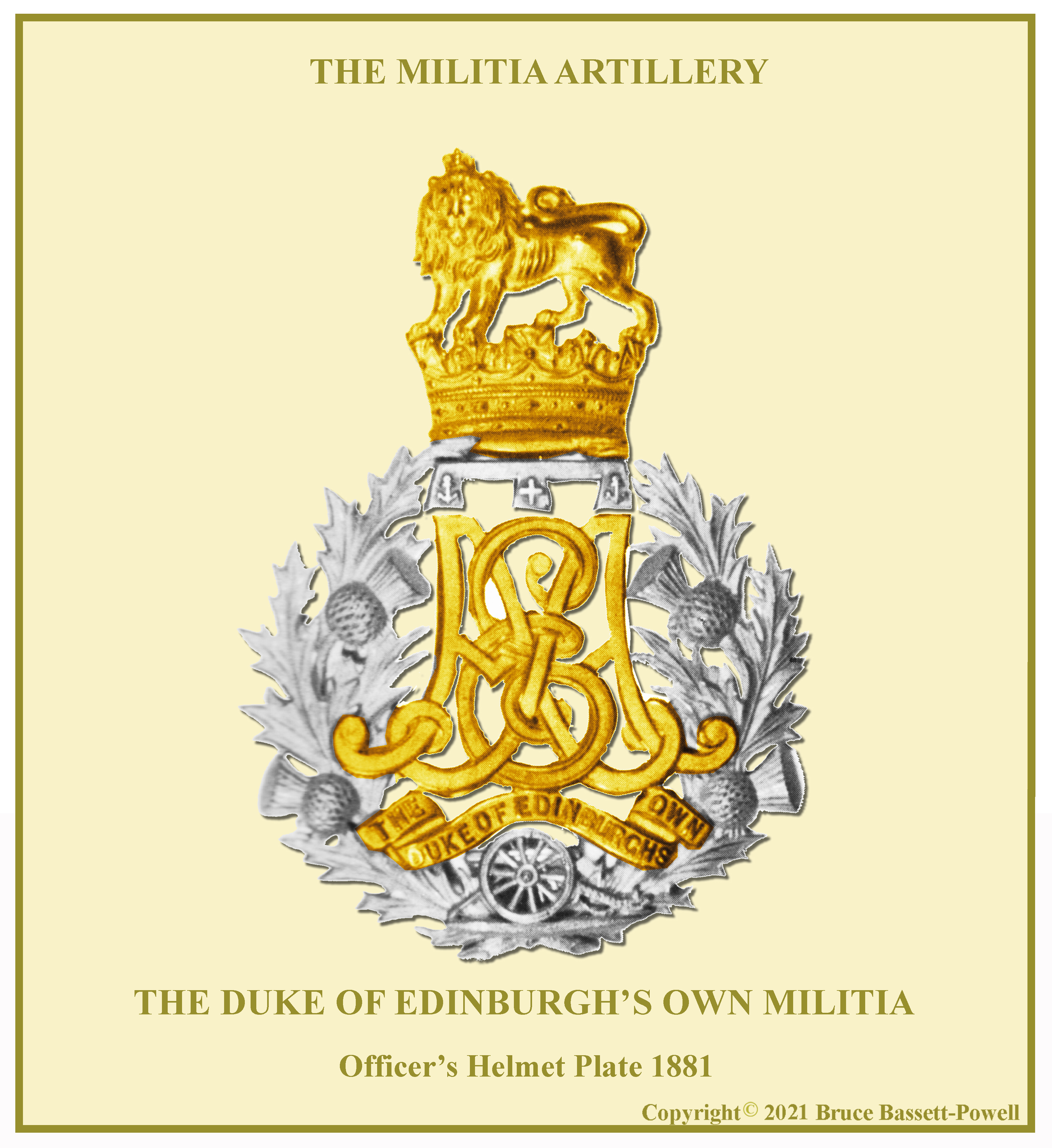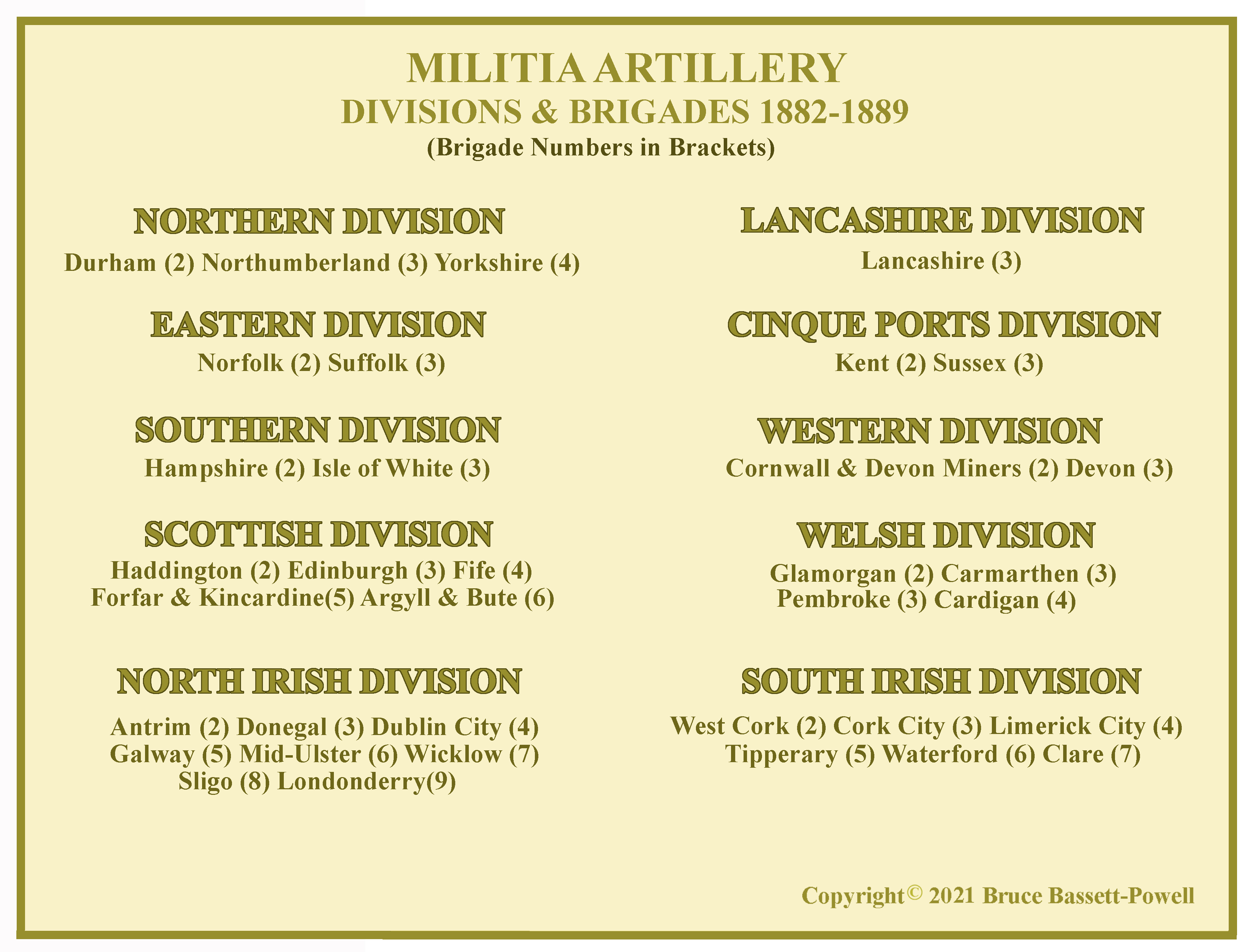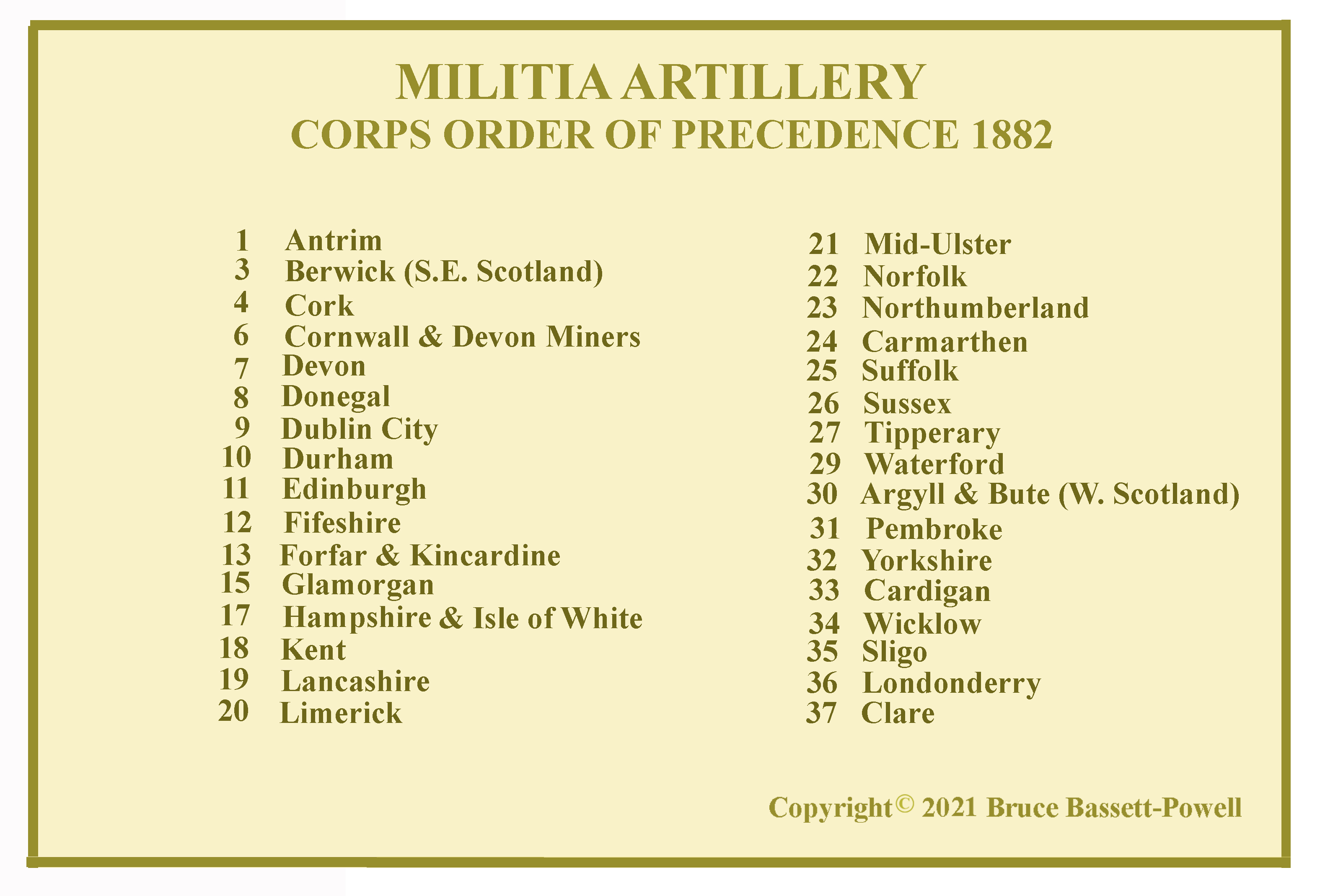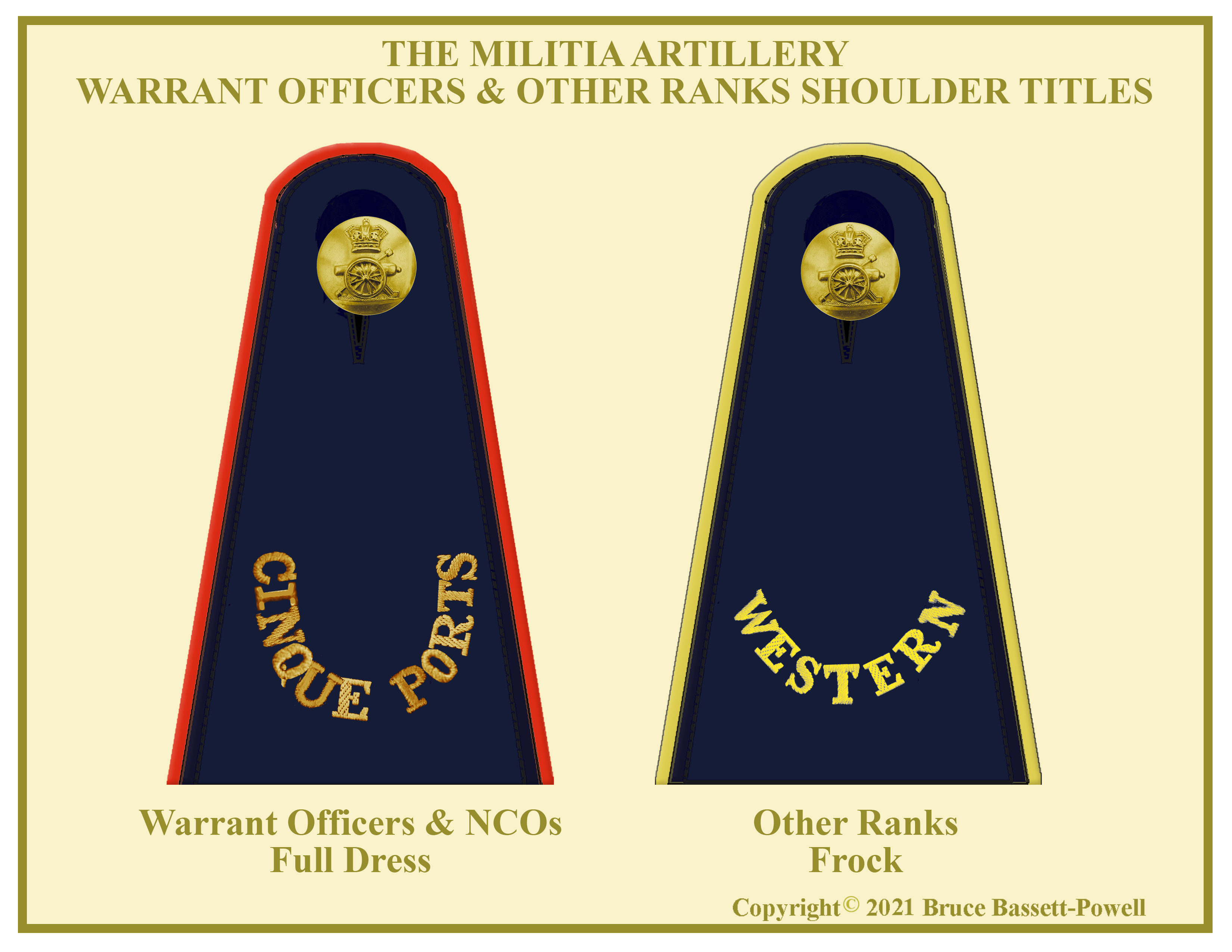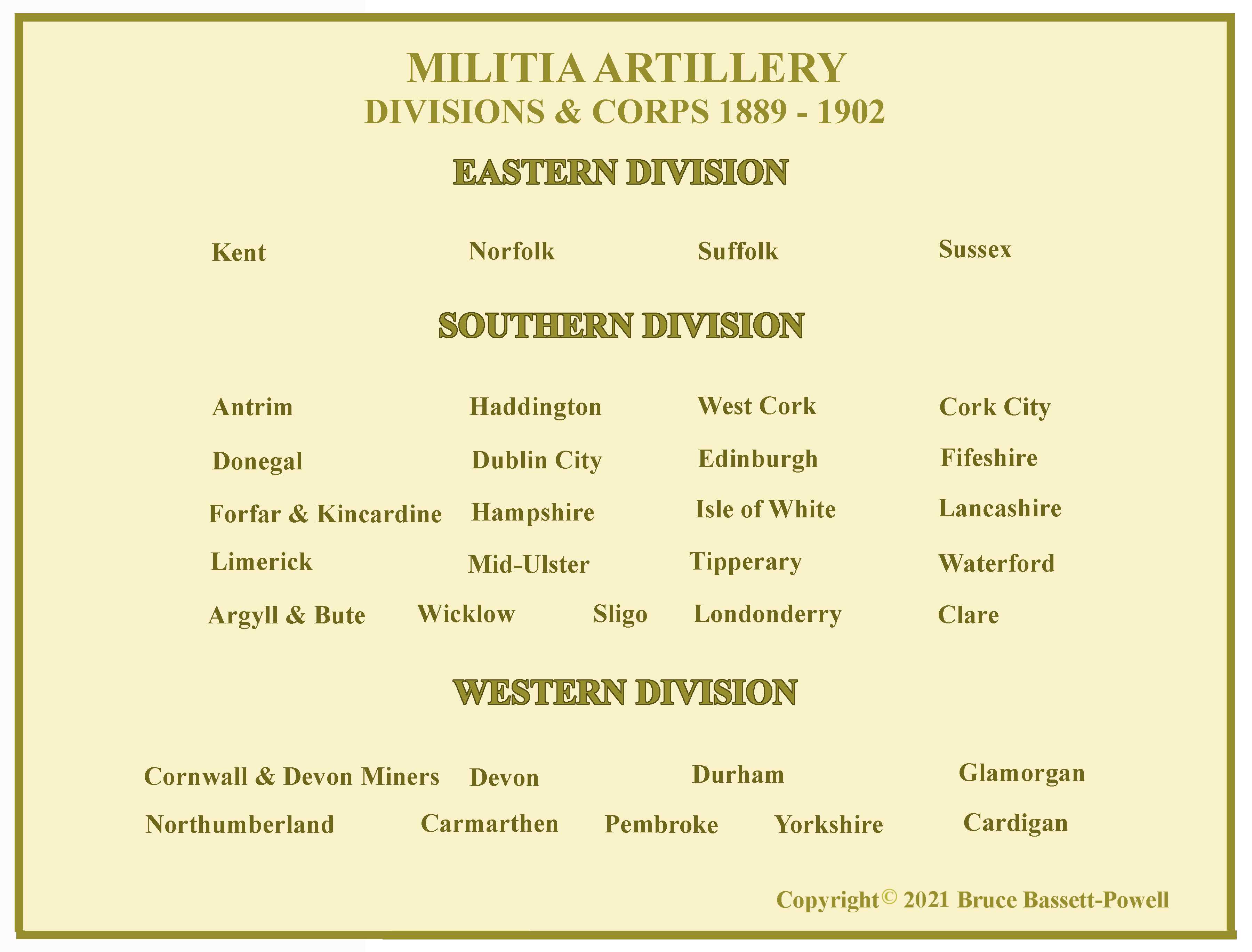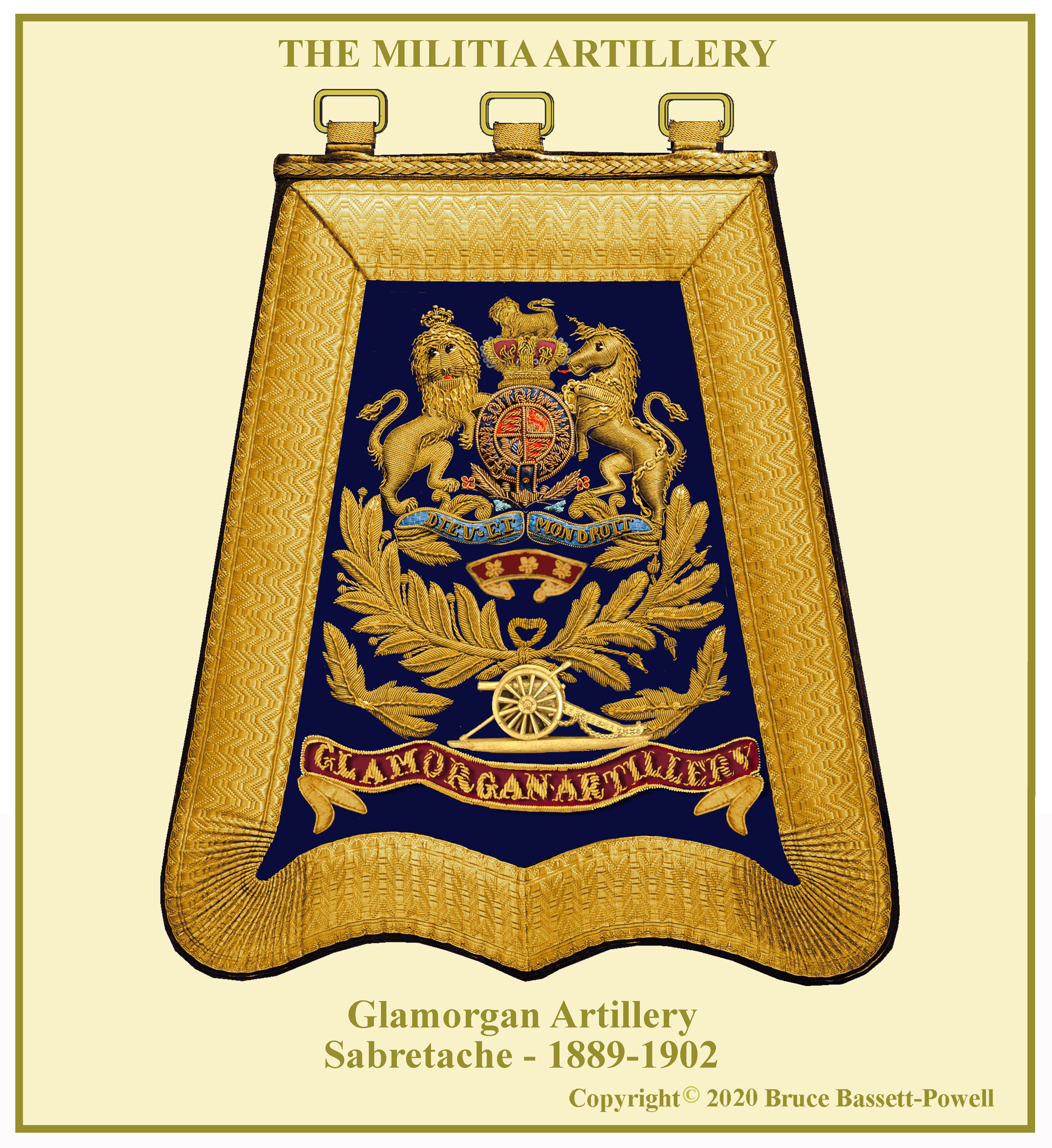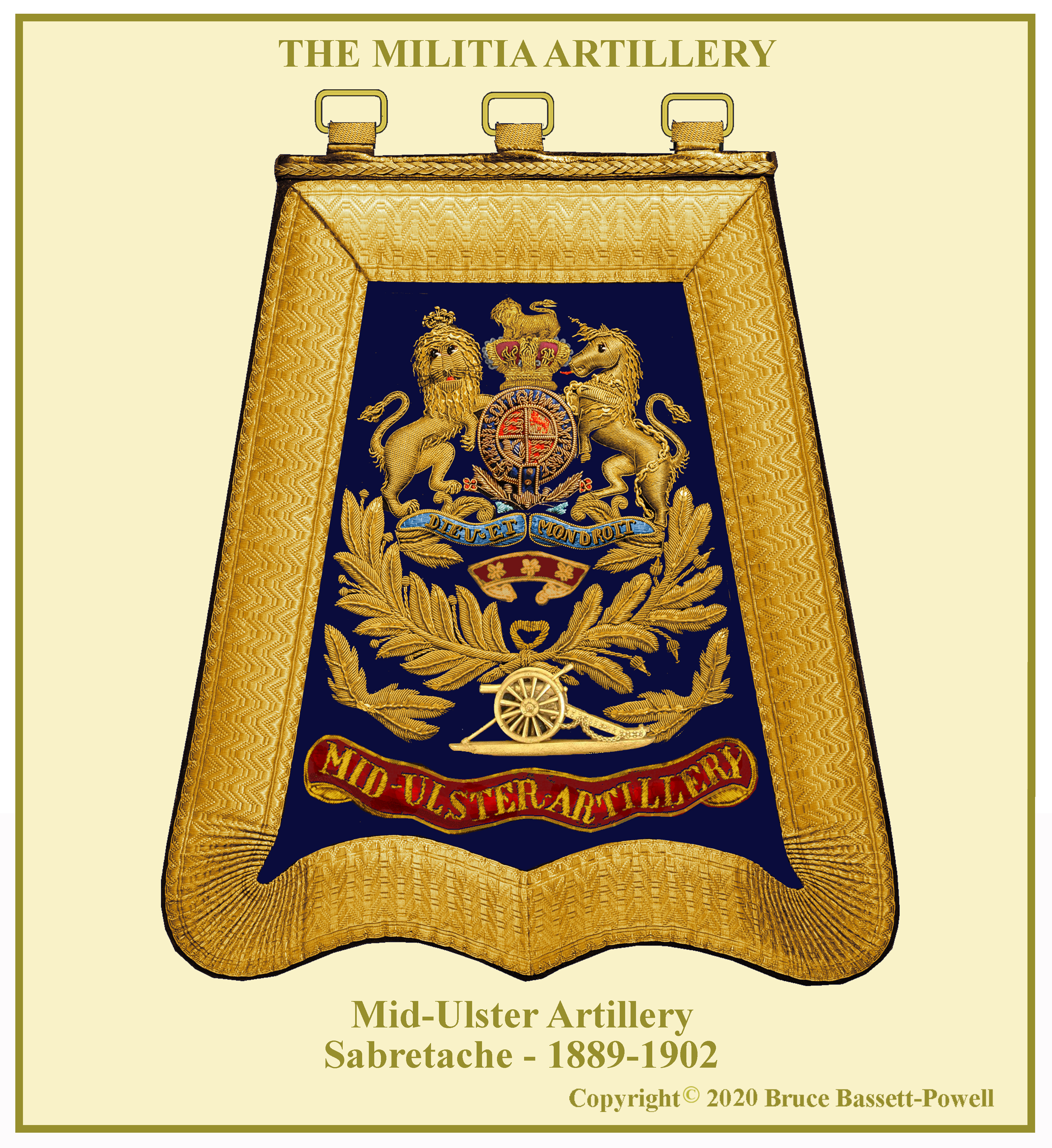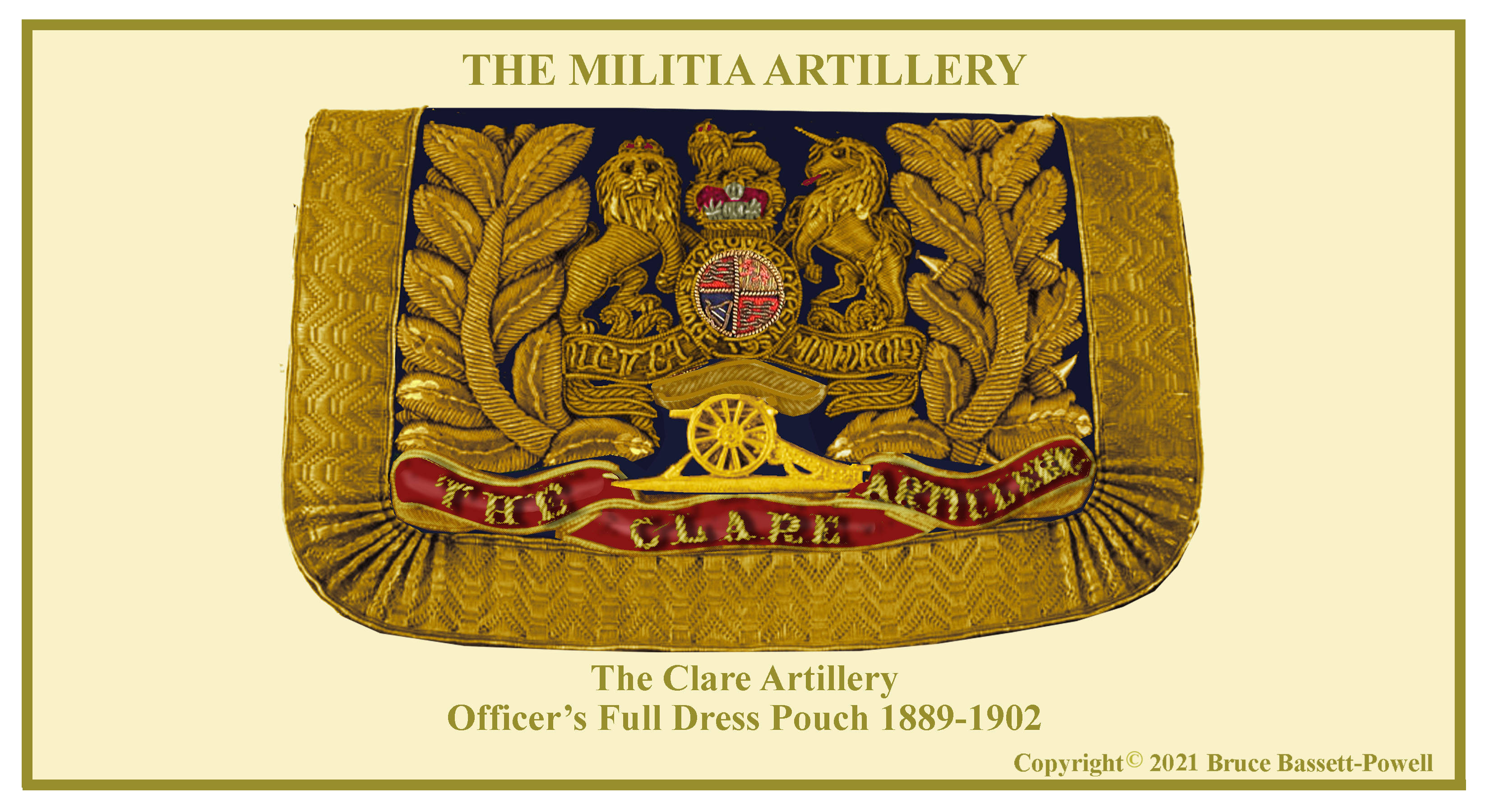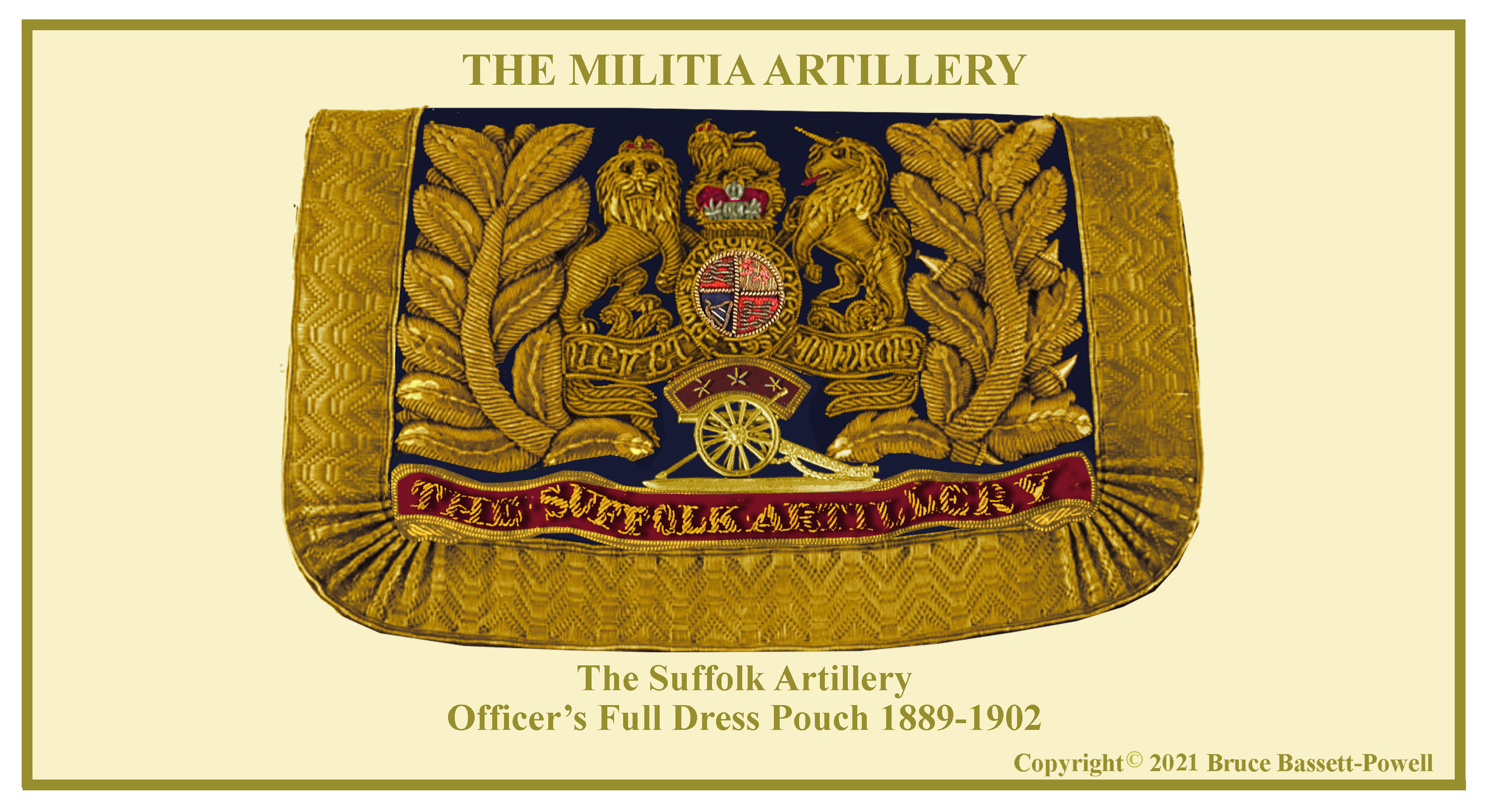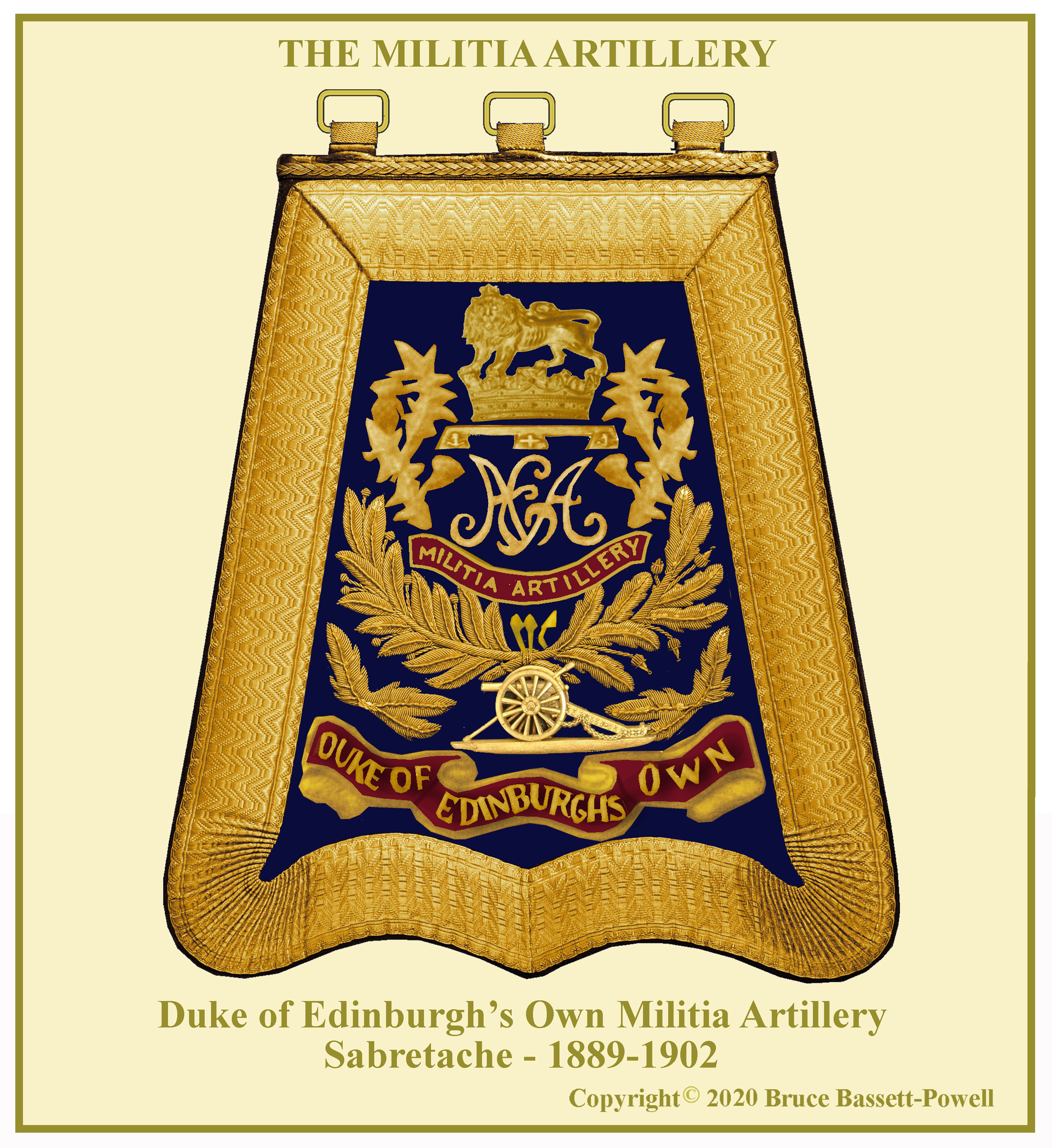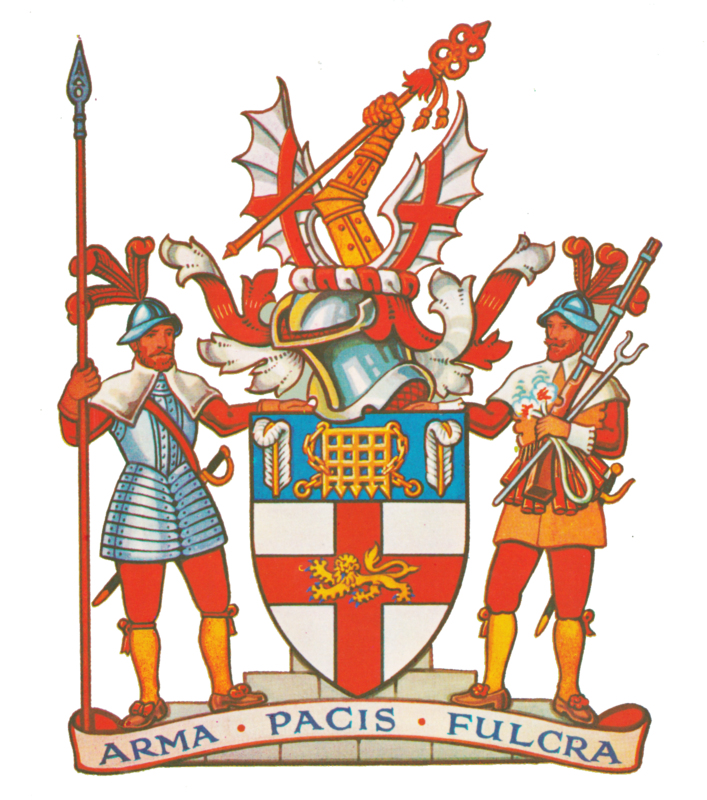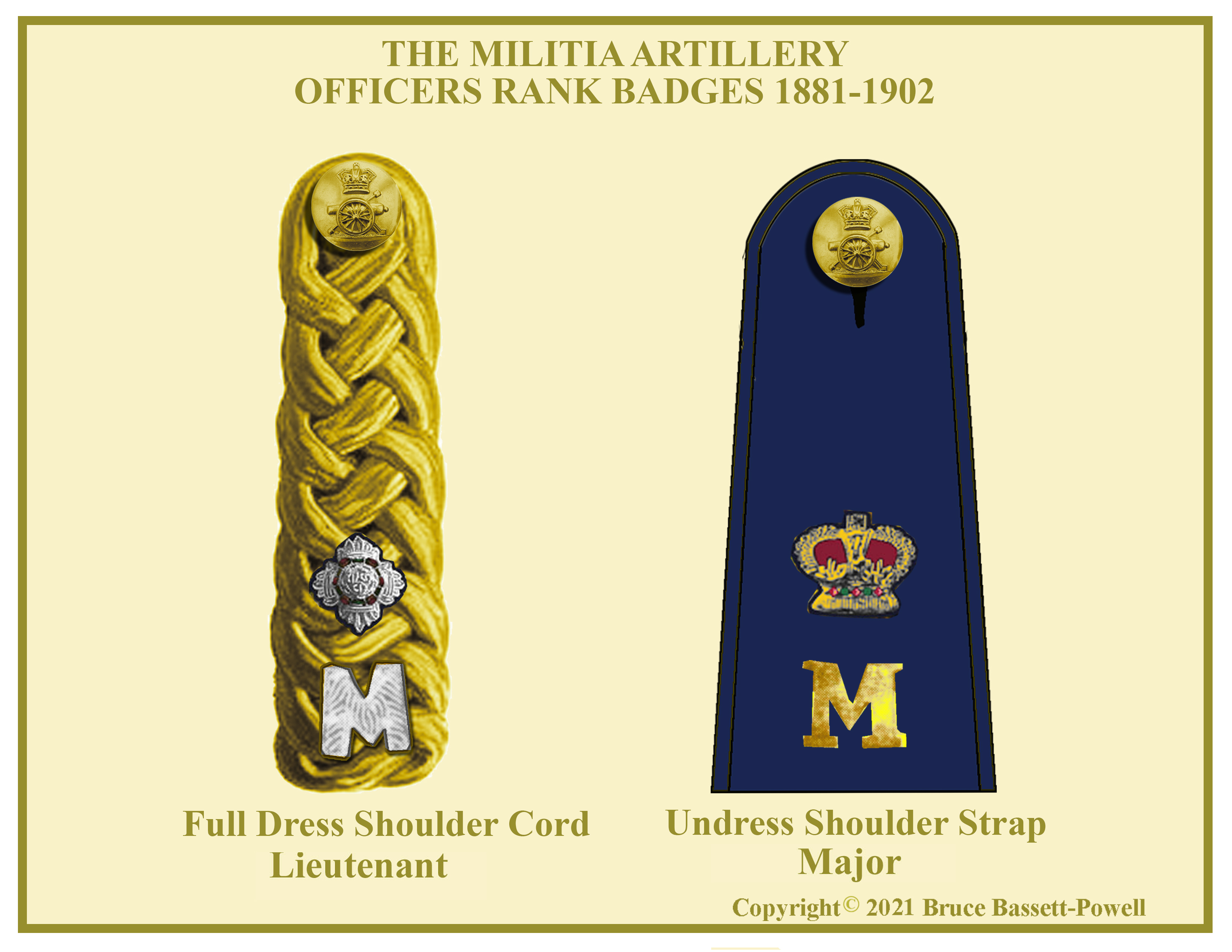UNIFORMS, ARMS & EQUIPMENT - ROYAL ARTILLERY
THE ROYAL REGIMENT OF ARTILLERY 1881-1902
THE MILITIA ARTILLERY
The most ancient of British military institutions was the Militia. Many of the corps on the establishment dated their existence back to the time of the Armada or before. From the late 1700s through the Napoleonic wars, the militia had been a reliable reserve force. However, after that long conflict, the militia went into decline and many units were disembodied or left with a small staff. By 1849 it had virtually ceased to exist. Fears of a French Invasion convinced a reluctant parliament to authorise the reraising of a Militia force of some 50,000 men in 1852. All volunteers at first, the act provided for balloting if establishments were not met. In 1853 another 30,000 men were embodied and during the Crimean War several militia battalions relieved regular troops at a number of Mediterranean garrisons.
The resurrection of the militia, which traditionally had been an infantry force, prompted the War Office to propose the establishment of an artillery force for coastal defence. Twenty-nine counties were chosen to form the Artillery Militia and the first corps to be embodied were the Cornwall and Devon Miners who were converted from infantry in 1852. Between 1852 and 1882, 41 corps were raised including 18 conversions, the bulk before 1860. With transfers and amalgamations, 32 remained 1n 1881. The question of precedence basically became alphabetical and those corps formed or amalgamated after 1855 went to the end of the list.
Below is the list of corps by precedence in 1882.
Uniforms of the Militia Artillery
Upon the formation of the Militia Artillery a very elegant, but short lived, uniform was adopted. A tall leather helmet was worn with silver badge and helmet spike with white horsehair plume descending to the base of the helmet. A double-breasted blue tunic with silver lace on collar and 3 pointed flaps on the cuffs. Blue trousers with silver lace in levee dress and scarlet stripes otherwise.
In 1854, the Militia Artillery was ordered to wear the same uniform as the Royal Artillery in every respect except that the lace and badges were to be of silver. When, under the Childers’ reforms in 1880, the Militia was attached to the regular units, all lace was to be of gold rather than silver along with badges and other items.
Although a few officers wore the 1878 helmet with silver fittings when it was introduced, most continued to wear the busby until 1881. In July1881, under General Order 70 , the dress of Militia Artillery officers was to conform in every respect to that of the Royal Artillery. After that the Officers helmet plate was almost identical to the Royal Artillery. The title bar with “Quo Fas Et Gloria Ducunt” was at first retained but soon replaced with the Title “Militia Artillery” and the scroll with “UBIQUE” was replaced with either nothing or florets. The title bars would change during the course of the eighties and nineties. The other ranks helmet plate was the same as the officers but in brass and would remain the same for them throughout the period.
The only visible indication of Militia status on officers’ uniforms was a small embroidered “M” on the end of the full-dress shoulder cords in silver or in gilt on all other garments.
The Re-organization of 1882
The individual militia corps were formed into 11 Artillery Divisions as brigades, each with two or more brigades. The 1st Brigade in each division was Royal Artillery and the remainder Militia.
The 1882 Divisions and Brigades were as follows
Officers helmet plates now had the divisional names on the title bar
Note the variations of gun above the title.
The titles of each division were reflected on the shoulder straps of each division. Warrant Officers and NCOs in gold thread and other ranks in yellow woven thread.
The Re-organization of 1889
In 1889 Coast Brigades were converted to Garrison Artillery and absorbed into 3 large Divisions. By Army Order 367 of that year the brigade designations on helmet plates and accoutrements were abolished and each corps could use their county or regional title instead. It was also emphasised that the term "Royal Artillery" was only applicable to the regular army units. Those corps which had assumed "Royal" titles during the previous seven years were ordered to discontinue them.
The 1889 Divisions and county corps were as follows
Helmet Plates & Accoutrements 1889-1902
Each corps now used their county titles on helmet plates and accoutrements. Examples are shown below.
There were some variations of the uniform items worn by the Artillery Militia, mostly minor. However there was one corps that adopted a unique set of insignia.
In 1874, Prince Alfred, Duke of Edinburgh became honorary colonel of the Edinburgh Artillery Militia. The next year, Queen Victoria granted them the title of "The Duke of Edinburgh's Own Militia Artillery" going forward. Although they used the title from that time, they continued to use the standard designations on their helmet plates and accoutrements. In 1890, however, they adopted the Cypher and monogram of the Duke of Edinburgh on their helmet plates, sabretaches and (presumably) pouches. These were worn till 1907.
EPILOGUE
In 1899, the South African War broke out and within a year over 4,300 Artillery Militia men volunteered for service in that conflict. The lessons learned in that war led to a major review of the British Army and its structure. In the early 1900s, attempts were made to convert some of the Militia Artillery into Field Artillery but ony one corps, the Lancashire, completed the conversion. Both War secretaries of the following 10 years, Broderick and Haldane struggled to find a role for the Militia and Volunteers and in 1908, Haldane created the Territorial and Special Reserve under an act of Parliament the same year. In effect he disbanded the Milita, including the Artillery and expected the personnel to transfer to the Special Reserve. This did not happen to any meaningful extent and by 1910 the entire militia ceased to exist.
NEXT:
THE HONOURABLE ARTILLERY COMPANY


